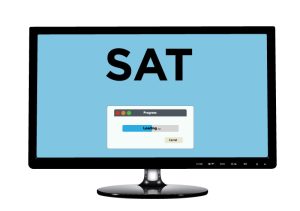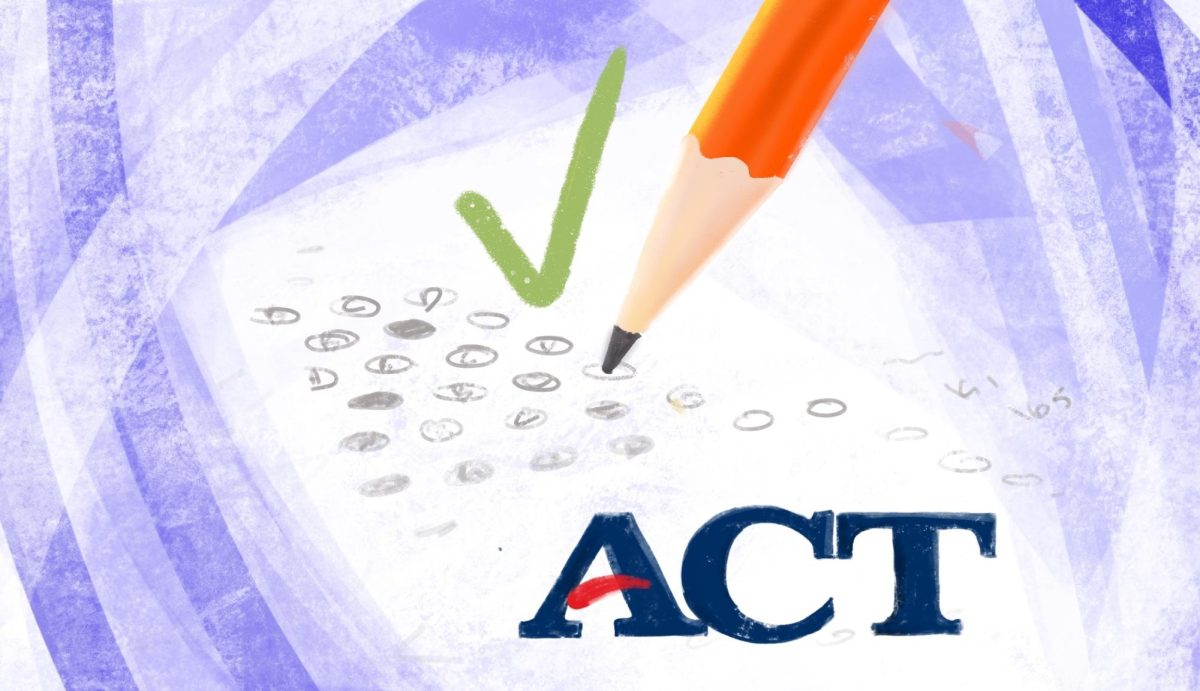The ACT and SAT are the well-known standardized tests juniors take as part of the college application process. As 2025 begins, the reality of these tests hits juniors: pressure is inflicted, and confusion grows. Berkley gives the SAT in the spring, but why not the ACT? How do you know which one to take? Are you supposed to study? These questions are unanswered for most, which is why students tend to be stressed and uncertain.
At Berkley, taking the SAT administered in the spring is required. According to Prep Scholar, a website centered around college admissions, 14 U.S. states are contracted with the College Board to administer the SAT to most high school juniors for free. In Michigan, the SAT was administered statewide for the first time during the 2015-2016 school year, replacing the ACT, which was given previously. This change was significant, as students tend to take the free test offered to them. Now that Berkley offers the SAT in the spring, most students resort to that test. But how do you know that’s the right test for you?
Although the SAT is the test offered, it isn’t necessarily the test you can perform your best on. Each test has its differences that contribute to the test as a whole. To find out which test best applies to each student, it is necessary to explore and compare the tests.
Starting off with the SAT: It is online and takes two hours and 14 minutes. There are two sections, each with two modules: Reading/Writing and Math. College Board explains, “Questions on the Reading and Writing section represent one of four content domains.” The Reading part consists of passage-based questions, and the Writing part consists of Craft and Structure, Information and Ideas, and Standard English Convention questions. There are 54 questions to complete in 64 minutes, split evenly into two modules.
The Math section on the SAT also consists of four domains: Algebra, Advanced Math, Problem-Solving/Data Analysis and Geometry/Trigonometry. This section includes 44 questions evenly divided between two modules, with 35 minutes in each module.

Dynamite Sports, a website that provides educational resources to high school student-athletes & parents, explains why the SAT may be your best fit. Dynamite Sports starts by saying, “If you are comfortable using answers to solve problems rather than figuring out the solution using only the information provided,” the SAT may be for you. The SAT questions are less direct, so it is necessary to use the answer to solve the question. Along with this skill, you must have a strong vocabulary; many challenging words appear on the test, and knowing vocabulary will give you easy points. The SAT timing isn’t too rigorous, so Dynamite Sports suggests taking this test if “you have trouble finishing timed tests”.
They continue to suggest that if “you struggle with high-level math and science material, especially if you haven’t completed Algebra 2 yet,” then the SAT may not be for you.
Next, the ACT, which is written (subject to change this year), takes two hours and 55 minutes and has four sections: English, Reading, Math and Science. The English section contains 75 questions that must be answered within 45 minutes. Most of the questions refer to a passage and require you to determine which version of an underlined word or phrase best fits, but some ask about the author’s intentions.
The ACT Reading is 35 minutes long with 40 questions to be answered. This section is made up of four readings, each with ten questions. There are always four topics: prose fiction, social science, humanities and natural science.
The ACT Math contains 60 questions to be answered in 60 minutes. Similarly to the SAT, the questions cover pre-algebra, Elementary Algebra, Intermediate Algebra, Coordinate Geometry, Plane Geometry and Trigonometry.
The last section, Science, is unique because the SAT does not have a Science section. There are 40 questions to be answered in 35 minutes. The content includes biology, chemistry, Earth/space sciences (geology, astronomy, and meteorology), and physics. No prior advanced knowledge is required, but general background knowledge may be needed to answer some of the questions correctly.
Dynamite sports gives insight into the ACT as well. They share that you should take the ACT if “you are able to read passages and decide on answers quickly, you have a good memory for formulae and grammar rules, you are comfortable with visual information like charts and graphs [and if] you are diligent and willing to do a lot of practice work.” Though these are essential factors, it is also important to recognize personal flaws that the ACT would better accommodate. Dynamite sports touches on this by saying that if “you tend to freeze up when confronted with unfamiliar questions or experience test anxiety when unsure how to solve problems,” the ACT is for you.
Evidently, there are differences between the two tests, and personal attributes will determine which test fits each individual. The SAT might be the easier test option if you are a slower reader and test taker. The ACT would be the best fit if you are a fast reader and enjoy reading long texts. If you have stamina, the fewer longer sections on the SAT won’t be an issue; if you have a short attention span, the shorter sections of the ACT will be helpful. Those who use the answers and the elimination method to answer questions will thrive on the SAT, while problem solvers will do well on the ACT.
Although there is a general idea of which test will fit your test-taking abilities, there isn’t a general idea of how much studying is necessary. There are no rules for studying for these standardized tests. It is a complete personal preference. Some students choose to do tutoring or studying, and others decide not to prepare but all options are okay!
The decisions surrounding the SAT and ACT are challenging, but with the proper research and thoughtful choices students can improve their chances of success.









